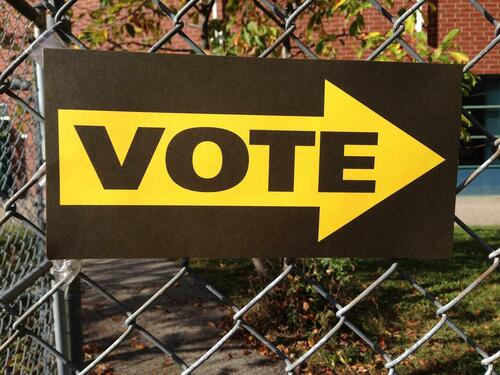Implications Of Making Ballot Images And Cast-Vote Records Public
Authored by Rachel Orey & Sarah Walker via RealClear Wire,
This article is a summary of the Bipartisan Policy Center’s August 2023 explainer, Implications of Making Cast Vote Records and Ballot Images Public. Read the full explainer for additional context and explanation.
Since 2020, election offices nationwide have received unprecedented numbers of requests for election records. These requests are critical to efforts by journalists, academics, and voters to hold governments to account, yet election offices are unequipped to process the volume of requests being received.
Cast vote records (CVRs) and ballot images are the two types of records most in demand. Rules governing the creation and release of CVRs and ballot images vary across election jurisdictions; not all choose to make these records public.
Ballot images are digital renderings of each paper ballot tabulated in an election, similar to making a photocopy of the ballot and then storing it securely. CVRs are electronic records of how the marks on the ballot are tabulated as votes for candidates and on other ballot questions. They come in a variety of formats, some much easier for the public to examine than others.
Proactively releasing these records to the public bolsters transparency and could reduce the volume of public records requests, saving limited resources. Many election jurisdictions already post CVRs or ballot images without issue: Los Angeles began making CVRs available to the public in the 1980s when members of the public could rent tapes with what we now call CVRs; Dane County, Wisconsin offers CVRs as a Do It Yourself Audit; and several Colorado counties piloted the public release of ballot images in recent elections.
Despite the transparency benefits of releasing CVRs and ballot images, making these records public has trade-offs: Voters’ privacy might be compromised, and many election offices do not have the necessary resources or technology to extract CVRs to begin with, let alone to implement appropriate safeguards. Furthermore, vote buying becomes feasible when ballot secrecy is violated—an extreme, if unlikely, potential ramification of making ballot images public.
Although CVRs and ballot images are often considered in tandem, each has distinct consequences for privacy, transparency, and efficiency.
Privacy Implications
Even when voters are instructed not to identify themselves on their ballots, some invariably write their name, contact information, or signature on their ballot. Because ballot images capture everything on a ballot, they might contain personally identifiable information if election officials do not redact it before posting.
When a ballot image includes write-ins, voters could lose their anonymity if someone recognizes their handwriting. Alternatively, when write-ins are included on CVRs or ballot images, voters could illegally “sell” their vote choice by including an agreed upon write-in, enabling the vote-buyer to identify the ballot and confirm other choices were marked as intended.
Unique vote patterns also carry a risk of facilitating vote buying: A malicious actor invested in the outcome of one or two races could illegally instruct voters to fill their ballot out in a particular way, essentially creating a unique identifier for the ballot. This risk applies to both ballot images and CVRs.
Finally, when a precinct has a small number of voters, or when a small number of voters use a specific method of voting, it can be possible to infer an individual voter’s choices by joining information from a CVR or ballot image with a voter file, which lists everyone who voted in a precinct. This danger is not unique to CVRs and ballot images: it also exists when officials release election results at the precinct level or in other small reporting units.
Efficiency Implications
Election offices are chronically under-resourced. Making CVRs and ballot images public has the potential to increase efficiency by reducing the burden of public records requests. But, this would require a baseline level of operation to make the records public. And election offices would have to take steps to protect voters’ privacy. Creating and storing ballot images also risks slowing tabulation and would require technology updates for many jurisdictions.
Some safeguards that facilitate the release of CVRs and ballot images without comprising privacy, transparency, or efficiency include:
-
Establishing a clear and uniform definition of CVRs and ballot images, ideally in coordination with other jurisdictions.
-
Clarifying which records are available via public record request or published online.
-
Using identity verification or comparable measures for those attempting to access records posted online.
-
Aggregating results from small reporting units to protect voter privacy.
-
Sufficiently funding election administration to address administrative concerns and add capacity.
As we approach the 2024 elections, interest in ballot images and CVRs is likely to persist. Policymakers must weigh the tensions between privacy, transparency, and efficiency as they devise solutions to meet the growing demand for access to these records.
Tyler Durden
Fri, 09/15/2023 – 22:20 Source
 RSS Feed
RSS Feed















 September 16th, 2023
September 16th, 2023  Awake Goy
Awake Goy 
 Posted in
Posted in  Tags:
Tags: 













